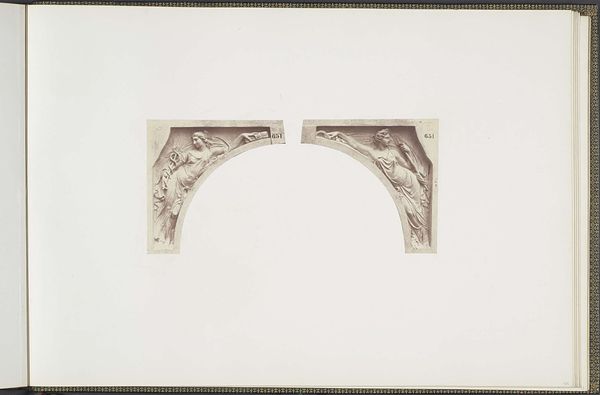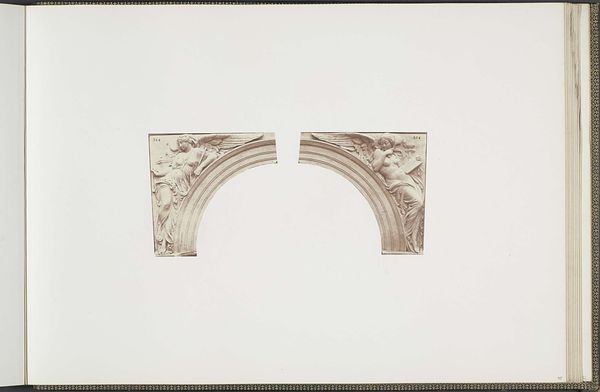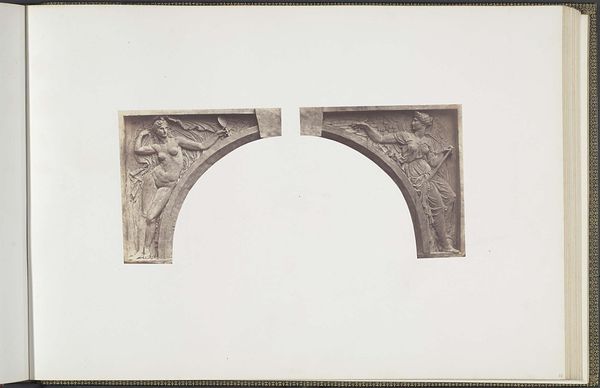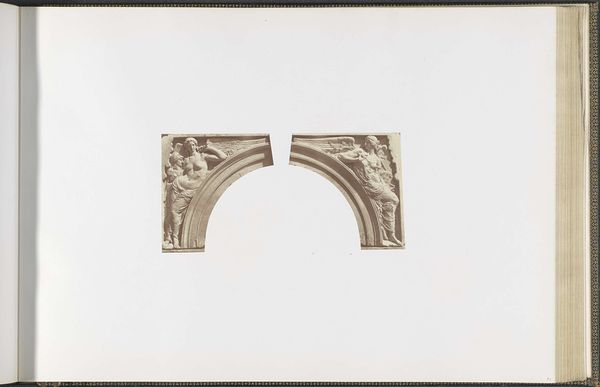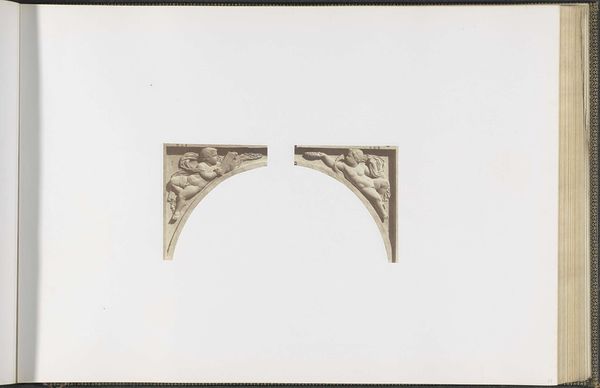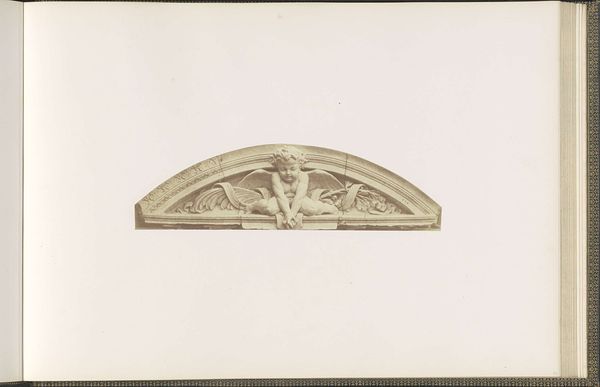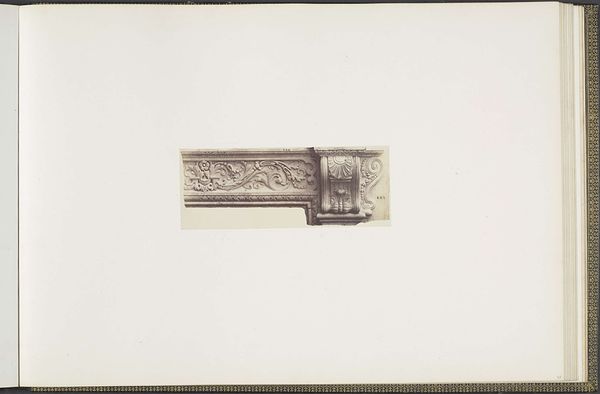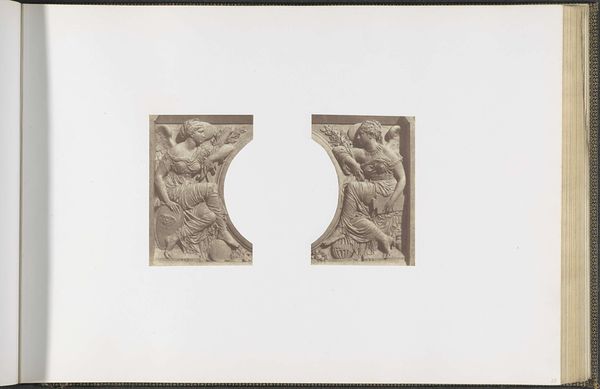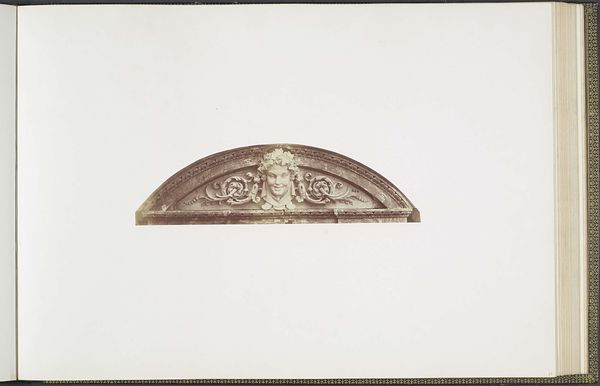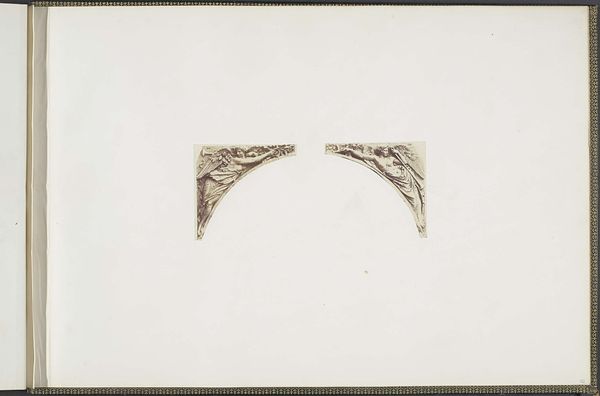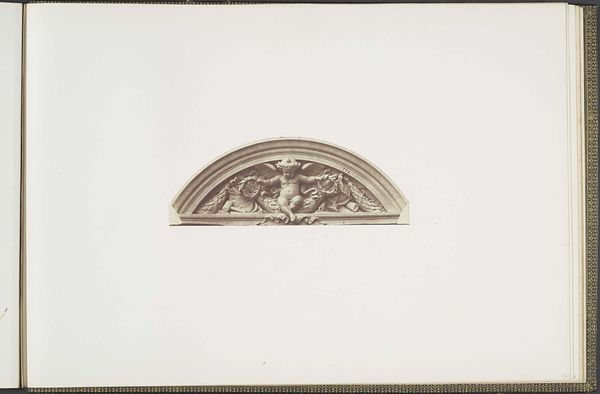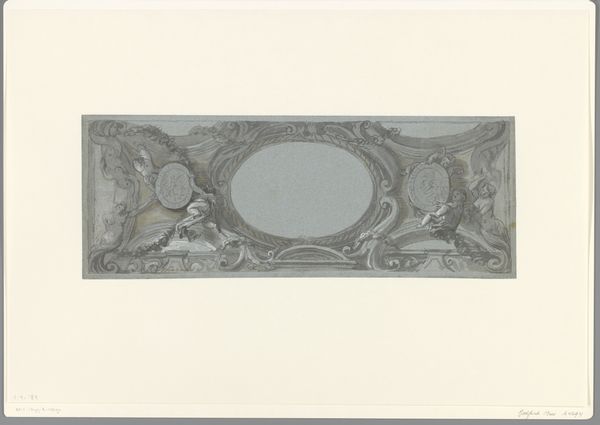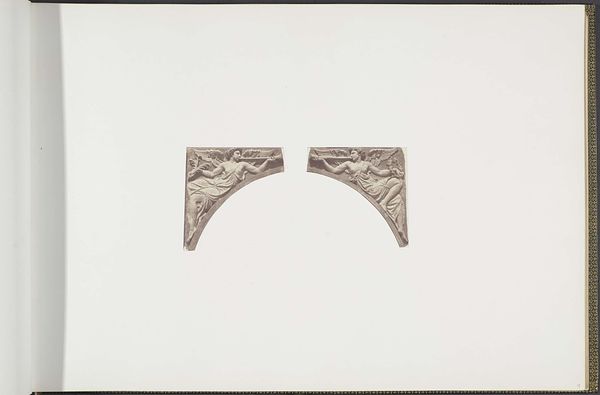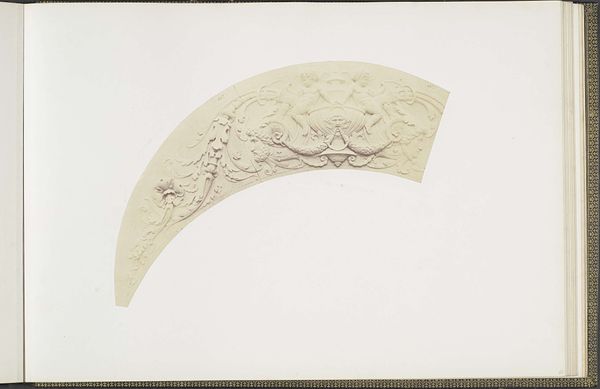
Gipsmodellen voor beeldhouwwerken op het Palais du Louvre: links "La Science moderne" door Emile Knecht en rechts "L'Art" door Emile Seurre c. 1855 - 1857
0:00
0:00
edouardbaldus
Rijksmuseum
print, photography, sculpture, gelatin-silver-print
#
neoclacissism
#
ink paper printed
# print
#
figuration
#
form
#
photography
#
sculpture
#
gelatin-silver-print
#
history-painting
#
realism
Dimensions: height 378 mm, width 556 mm
Copyright: Rijks Museum: Open Domain
Curator: Immediately, I’m struck by the almost austere elegance of this composition. The tones are soft, the light evenly distributed... there’s a stillness that invites contemplation. Editor: Indeed. We are looking at a gelatin silver print by Edouard Baldus, taken circa 1855-1857. It showcases plaster models for sculptures that were intended to adorn the Palais du Louvre. Specifically, "La Science moderne" by Emile Knecht on the left and "L'Art" by Emile Seurre on the right. Curator: The fact that these are photographs of plaster models adds an intriguing layer. It's an image of an image, mediating our access to the intended artwork. I also find myself contemplating what exactly defines the "Modern Science" being depicted, as well as the meaning behind “Art” which seem inherently broad concepts for sculptural encapsulation. Editor: Precisely. These sculptures, neoclassical in style, were conceived during a period of intense national self-reflection and construction. Note the symbolism: the attributes associated with each figure, their clothing, and even the orientation suggests prevailing allegorical traditions. Consider how the choice of these figures served to shape French cultural identity within that specific context. Curator: And isn’t there a political message embedded here? "Science" and "Art" flank a central architectural element - one that in the Louvre, would embody State power and authority. This piece then makes a statement of sorts – about the value the State places on artistic and scientific progress. They are presented as foundational supports. Editor: Exactly. This photograph then functions on multiple levels. It’s documentation, it's a record of artistic intent, and simultaneously a piece of political commentary. It subtly reveals how these sculptures contributed to an ideal of French grandeur during the Second Empire. I'm left pondering the role art plays in reflecting and shaping national identity. Curator: And how a single photograph can encapsulate so many layers of meaning! The silent dialogue between the two figures, preserved across time... a fascinating reflection of that era’s values, ambitions, and self-image.
Comments
No comments
Be the first to comment and join the conversation on the ultimate creative platform.
